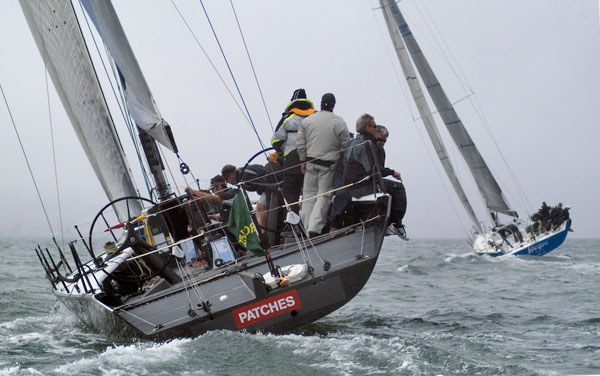
Alone, Yet in the Company of Others
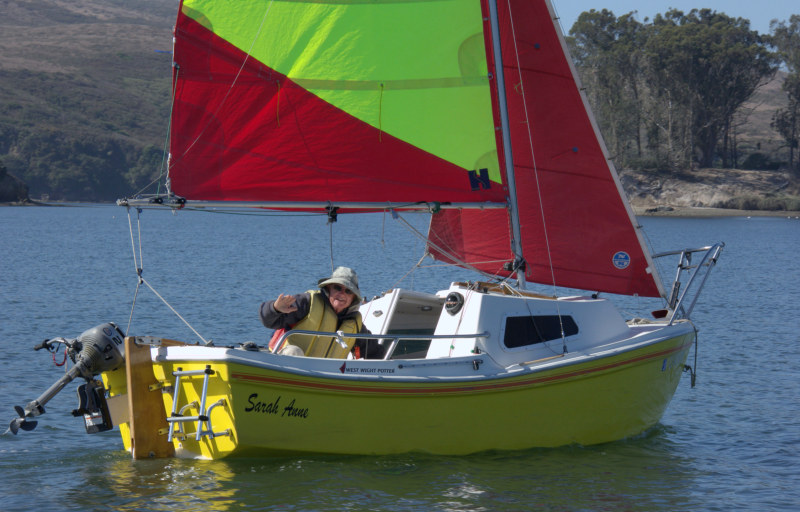
Few quotes are more overused by boating writers than Kenneth Graham’s famous line from The Wind in the Willows: "Believe me, my young friend, there is nothing — absolutely nothing — half so much worth doing as simply messing about in boats." But we can think of no group to which that statement more aptly applies than Potter Yachters. In fact, "messing about" is implicit in the brand’s name, as "potter" is Brit English for "putter."
In the item we published last Wednesday on 100-year-old sailor Connie Spanier, we asked readers to tell us about other senior sailors. Jim ‘Goose’ Gossman wrote in to let us know that Potter-Yachting in the Bay Area is going strong: " We have about 80 members, with average age pushing 70. Many are in their late 70s and several in their 80s. Talk about hanging with cool role models! At 63, I have something to look forward to. The group has a dozen or so events each year to various locations.
"Don Person, at 87, is the "Council of Elder," and my hero. He rigs, launches, and sails his Potter 15 every Wednesday in Alameda, joining several cronies for lunch. He attends almost all PY events and overnighters (including the Messabout in the San Juans for two weeks in the fall). Always smiling, he is relaxed, nimble, and quick (sailing and thinking). He knows when and how to reef, and when to start the motor.
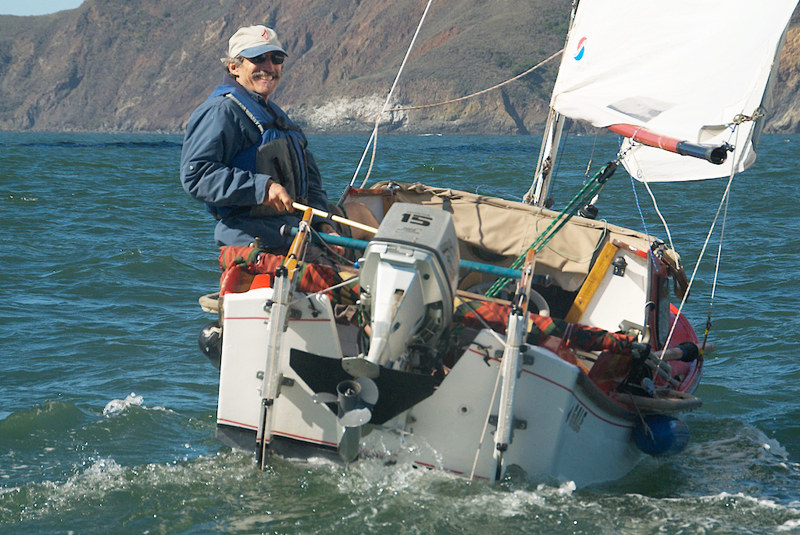
©2015Latitude 38 Media, LLC
"Harry Gordon is 86, and has been sailing his 1967 Potter 14 since it was new! He experiments with his sailing rigs, still flies airplanes, and also smiles a lot. He built a custom-reefing lateen rig, and keeps up with the stock boats.
"Two weeks ago we had the Cruiser Challenge in Monterey, with 33 boats. The group doesn’t race much, but still enjoys a little competition. Many have trouble seeing and hearing starting signals, and following confusing race instructions, so this is our only formal race. Bud Kerner and David White (both mid 70s) took four days to sail down to the event from Rio Vista (about 150 miles). Part of the Potter-Yachter creed is "we sail alone yet in the company of others.” This helps ensure a long and safe career on the water. Knowing one’s limitations and acceptable comfort levels is key." Words to live by. We’ll have more on West Coast sailing elders in the September issue of Latitude 38 magazine.
Why Are Cabo Fuel Dock Fees So High?
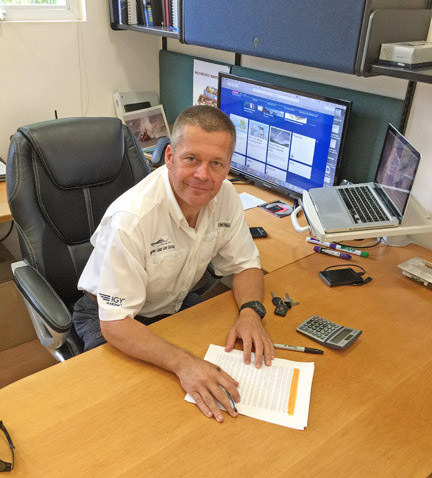
©2015Latitude 38 Media, LLC
Since the Wanderer and The Dona were halted in Cabo San Lucas by Baja weather during our 1,000-mile Riviera Nayarit-to-San Diego delivery trip with Profligate, we decided to call on Darren Carey, Manager of IGY Marina Cabo San Lucas, to get his explanation for the very steep fuel dock rates for tying up to buy fuel in Cabo.
Darren explained that as of right now, the flat-rate dock charges only apply at Marina Cabo San Lucas. (The rules may change in a few months to include all other fuel docks in Mexico, or the flat rate at Marina Cabo San Lucas may be eliminated.) Currently other fuel docks in Mexico are able to charge an additional percentage more per gallon rather than a flat rate for wharfage, which is what Marina Cabo San Lucas used to do and would like to do now. Alas, it’s not up to them. And Carey, who from the beginning of his reign has stated he wants more sailboats in Cabo, was the first to admit that the boat owners who are really getting screwed are owners of sailboats. "The problem is that their boats tend to be long, but they don’t tend to need much fuel."
To give you an idea of how out of whack the system is, if we brought the 63-ft Profligate to the fuel dock, we would have to pay a wharfage fee of $375 U.S. Even if we only needed 10 gallons. This is 27 times (!) the wharfage fee that the owner of a 25-ft panga or 25-ft fishing boat would have to pay. If you’re like us, you get the suspicion that the owners of larger boats are being forced to subsidize the wharfage fee of the countless pangas and small fishing boats that work out of Cabo.
Darren did have some good news. The law allows for considerable price breaks in the flat fee for: 1) Participants in events such as the Baja Ha-Ha, and 2) Marina tenants. A strategy he suggests for Ha-Ha participants who want to be as thrifty as possible is to anchor out for three or so days after the Ha-Ha, then come in and stay in the Marina Cabo San Lucas for just the last night. "The discount you get because you stayed in the marina for one night will, to a large extent, offset the flat fee you have to pay to get even a little fuel."
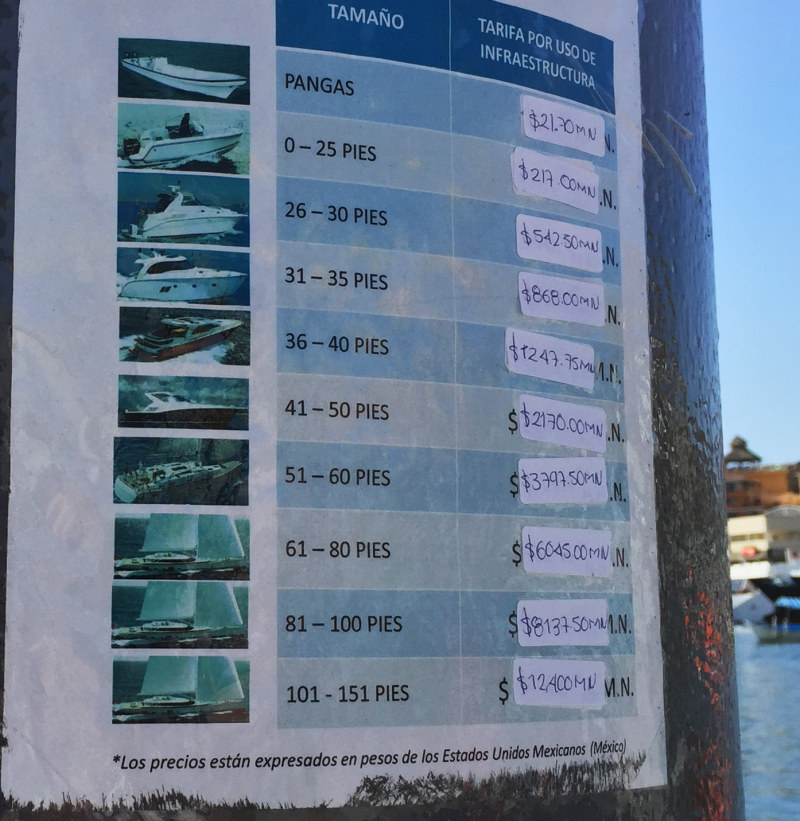
©2015Latitude 38 Media, LLC
Any questions? Darren will be at the Baja Ha-Ha Kick-Off Party at the West Marine Super Store at 1250 Rosecrans in San Diego on October 25 (1 p.m.) to answer your queries.
While in Cabo, we noticed that many of the marina’s slips are still out of action. Darren confirmed that 30% of their slips had been destroyed by last September’s hurricane Odile, and they haven’t been repaired yet. He scoffed at a report in a local paper that the reason was that the marina didn’t have insurance.
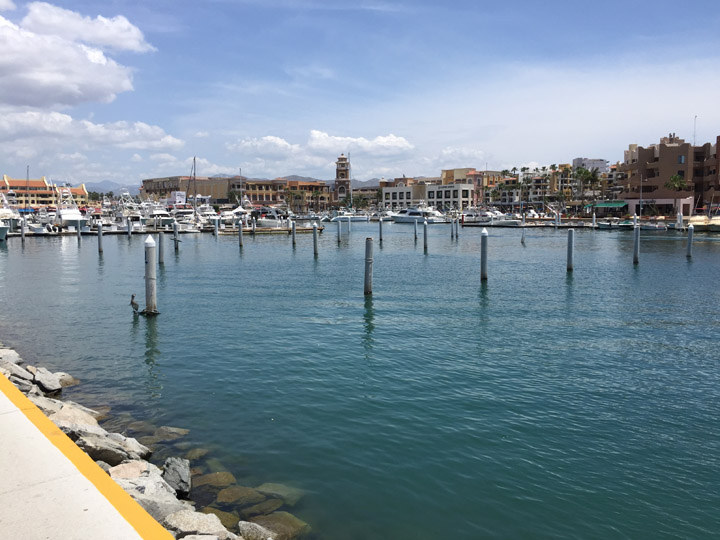
©2015Latitude 38 Media, LLC
"Does anybody really believe that IGY, which owns major marinas all around the world, wouldn’t have insurance, or that the Mexican government would allow us to operate without insurance?" The problem, he says, has been with red tape, such as getting the permits necessary to even rebuild what had already been there. If you think getting permits in the United States is hard, and it is, you’re not well versed in how difficult it can be to get them in Mexico.
The good news is that the pilings are still there, and Ha-Ha boats will be able to tie bow and stern. And thus more will be able to get in and raft up than if the slips were there. About five Ha-Ha boats used the pilings last year and said it was just fine.
Given the very steep wharfage fees, we were frightened at what we might be charged at the marina’s tienda for a medium-size bottle of shampoo. We were stunned when it was 16 pesos — less than a dollar. This is for about 10 times the amount of shampoo you’d pay $5 for at SFO. Later, while walking down the street, we noticed a sign at a Subway store advertising sandwiches for 29 pesos. That’s less than $2. As was the case in Europe, the prices of some things are very reasonable.
The other thing that needs to be noted is how friendly the Mexican people are. Despite having to periodically deal with numbskull tourists who have way more money than the Mexicans will ever have, they are unfailingly friendly and genuinely like to see visitors have a great time.
Otherwise it was very hot and very humid in Cabo. How hot? About 96 during the day and the low 80s at night. Sleeping on a boat would be impossible without several big fans or an air conditioner. Jumping into a pool or the ocean brings little relief, as they are very warm, too. There is a reason that this is the off season. That said, the Bisbee and other fishing tournaments are in October, so the high season isn’t that far away.
Rolex Big Boat Series Preview
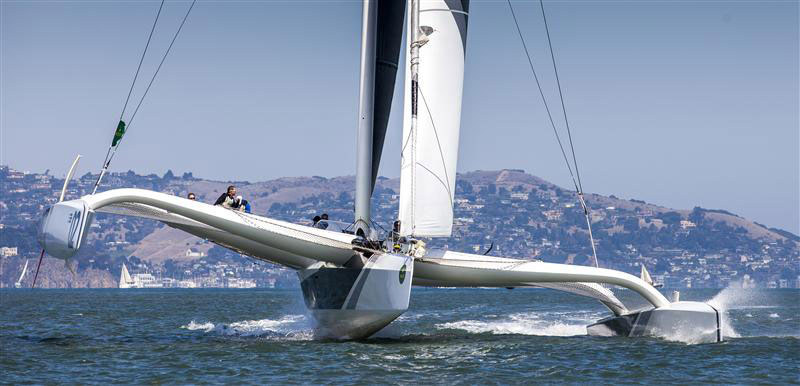
If you’re planning on signing up for this year’s Rolex Big Boat Series, to be hosted by St. Francis Yacht Club on September 17-20, it’s time to get a move on. This Saturday, August 15, is the early entry deadline. You’ll pay an extra $200 if you procrastinate! Saturday is also the deadline for establishing a one-design division.
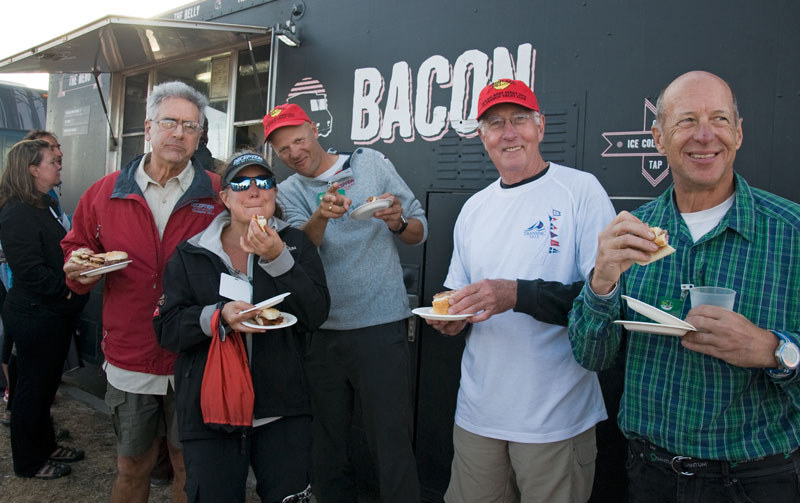
©2015Latitude 38 Media, LLC
As of this morning, 84 boats were signed up for the regatta, which is still more than a month away. The biggest — and perhaps most notable — is the 1974 S&S 78 Kialoa III, entered by Jorge Madden of Providence, RI. (Among her accomplishments: in the hands of her original owner, Jim Kilroy, Kialoa III held the elapsed time record for the Sydney Hobart Race from 1975 until 1996!) The smallest, at 22.75 feet, will be the J/70s, assuming their owners step up and register — only two were signed up when we checked this morning.
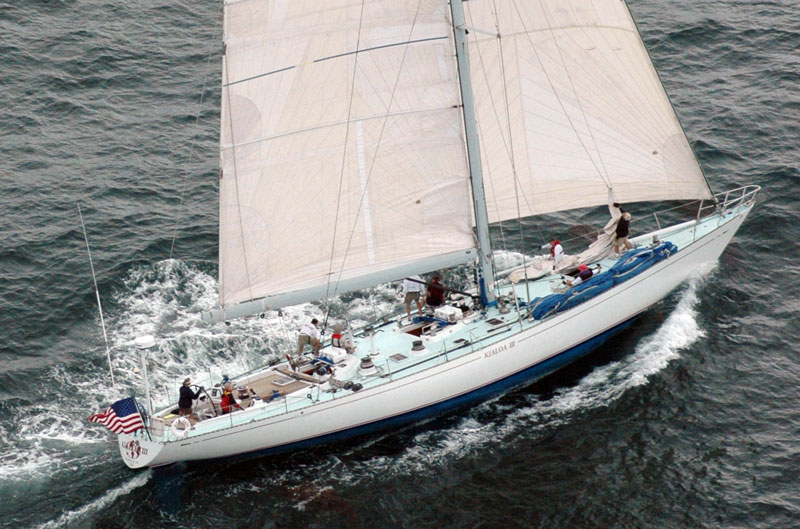
©2015Latitude 38 Media, LLC
Boats will be coming from Hawaii and Mexico, but perhaps traveling the greatest distance will be skipper Martín Baeza from Santiago, Chile, who’ll campaign a local J/105. The J/105 fleet is using the regatta for their North American Championship, and they expect about 30 boats, likely to be the biggest one-design class. The Melges 24s have a baker’s dozen signed up so far.
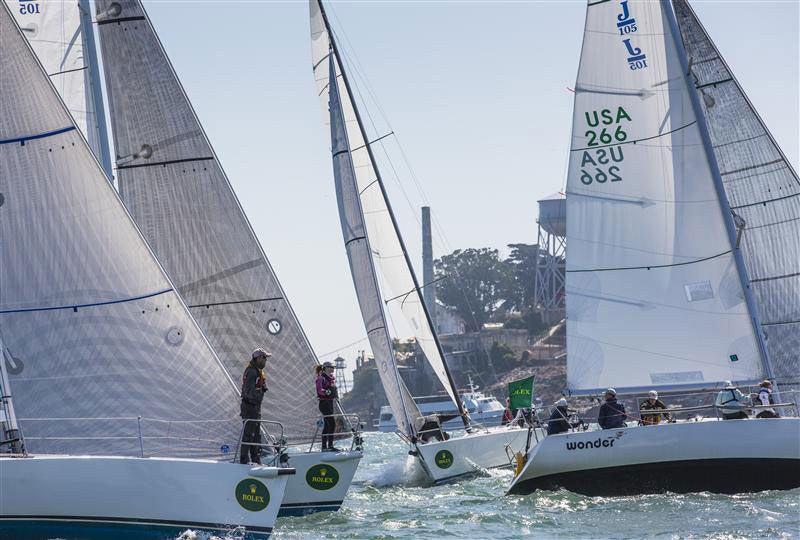
"As the fleet of the Rolex Big Boat Series starts to converge on the West Coast, I checked in with the half-dozen entrants that also raced the Transpac," writes Meredith Laitos of StFYC. "A bit of digging revealed that four of these boats are not only racing in both regattas — they are also partaking in the Ocean Cleanup on their way back across the Pacific." The four entries are the TP52 Patches, the J/125s Timeshaver and Resolute, and the Rogers 46 Varuna. For more on the Ocean Cleanup, see our ‘Lectronic post on August 7.
